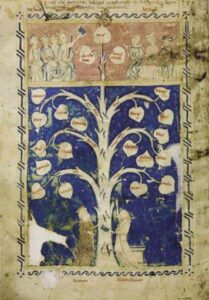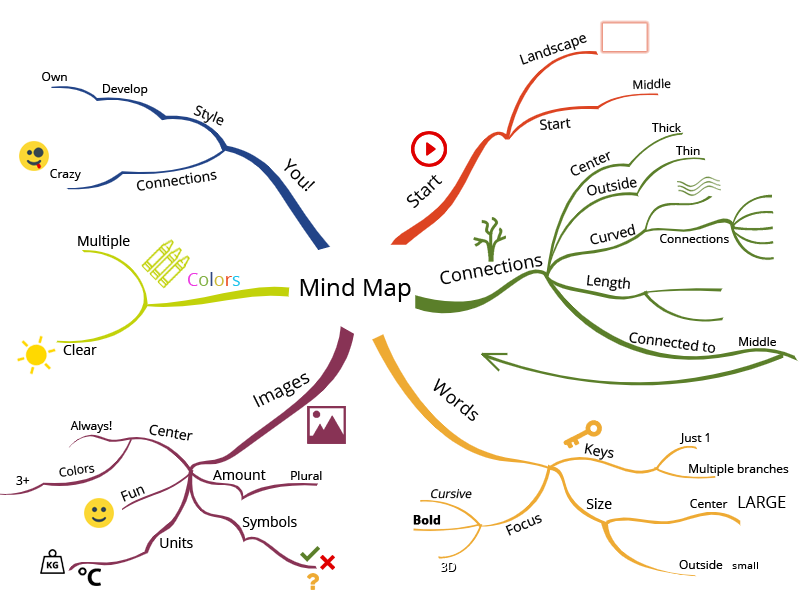 A mind map helps to visualize structure and context. It also shows what are superior and subordinate aspects to a concept. If you make a good mind map, it will show you how balanced a text or presentation really is.
A mind map helps to visualize structure and context. It also shows what are superior and subordinate aspects to a concept. If you make a good mind map, it will show you how balanced a text or presentation really is.
Using a mind map is a useful learning strategy both during reading, as well as a “reminder” to be able to quickly see the overview and the whole, which typically comes in handy just before a test or when writing a report.
The mind map in today’s sense was invented by Tony Busan, a British author, also known through the BBC program “Use your head” from around 1974.
One of the earliest examples is from the Porphyry of Tyros, a “famous” philosopher from the 3rd century, who visualized the categories of Aristotle.
An average mind map has around 30 nodes (J. Beel, S. Langer, 2011), but this will depend on the size of the chapter, as well as how accurate and precise you need to be.
Tips
- Start in the center of the sheet with a picture of the item
- Use at least 3 colors, preferably
- Use pictures and symbols instead of words – if you can and if you find it useful
- Remember that you can use uppercase and lowercase letters for something as well
- The links themselves can carry information, make them thicker or use color
- Do not be afraid to create a new version – this is a tool, not an art project
Tools
There are many digital tools available for creating mind maps, such as https://coggle.it/.
But the easiest and most flexible way to make one is still a piece of paper and something to write with: it is available offline and you can easily make drawings, doodles etc. That way, you keep your focus on the subject matter and learning, instead of handling the digital tech.
